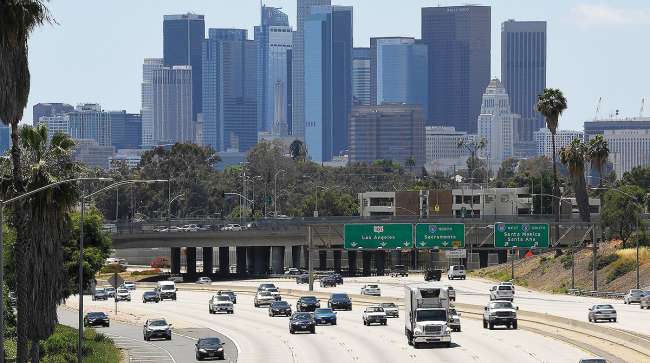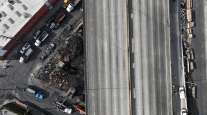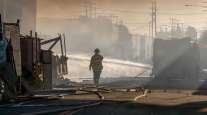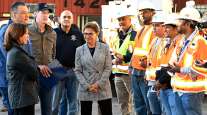Staff Reporter
Los Angeles Continues to Study Congestion Pricing’s Potential

[Stay on top of transportation news: Get TTNews in your inbox.]
The Los Angeles County Metropolitan Transportation Authority is proceeding with outreach efforts as it explores the potential of a congestion pricing pilot program for the region.
Metro, as the group is known, held a virtual press briefing Sept. 29 to discuss the group’s Traffic Reduction Study. The two-year feasibility study is meant to determine details of a program that would include other transportation options as means to reduce traffic and ease travel for people in the area. As the transportation agency of Los Angeles County, Metro represents about 9.6 million people.
Besides reducing traffic on roadways, the program is meant to provide more options for getting around the area, including pedestrian routes, bike lanes, bus services, carpool incentives and telecommuting.
“The Traffic Reduction Study is really about planning for the future,” Tham Nguyen, senior director of Metro’s Office of Extraordinary Innovation, said during the briefing. “Continuing with business as usual will allow traffic congestion to get even worse. Let’s explore new ways to get out of traffic.”
TRS Fact Sheet Summer 2020 by Transport Topics on Scribd
In addition to the briefing event, Metro has planned four virtual public meetings on the study, which will take place between Sept. 30 and Oct. 6.
Over the next few months, Nguyen said Metro will study several concepts associated with a potential pilot program, such as locations, pricing models and willing partners. Various models, including corridor, vehicle miles traveled and cordon pricing, will be considered. Cordon pricing means charging a vehicle that crosses a boundary into a pricing zone.
The presenters stressed that a pilot program would be intended to reduce traffic, not generate revenue. Joshua Schank, chief innovation officer for the Office of Extraordinary Innovation, said revenue will be reinvested in communities to provide transportation alternatives. Nguyen noted that, when used as part of a comprehensive strategy to reduce traffic, congestion pricing can encourage just enough people to change the way they travel, whether that means traveling at a different time, taking an alternate route or relying on another mode of transportation.
“It’s about a holistic approach to transportation,” Schank said.
By 2021, the team aims to have a decision from Metro’s Board of Directors on a preferred pilot concept. The study is slated to end in 2022, at which point the Metro Board is expected to reach a decision on an implementation plan for the pilot program.
Nguyen said the team plans to consider various modes of transportation, including cars and trucks, as part of the study. Once a location for the pilot is specified, Ryan Wiggins, senior manager within the Office of Extraordinary Innovation, said understanding the “transportation profile” of a particular corridor, including which vehicles frequently traverse it, will be important as the team shapes goals.

What does it take to be a commercial driver, and what are schools doing to train them? Host Michael Freeze speaks with Chris Thropp of Sage Truck Driving School and Don Lefeve of the Commercial Vehicle Training Association. Hear a snippet, above, and get the full program by going to RoadSigns.TTNews.com.
Schank said Los Angeles leaders have been trying to reduce traffic in the region for several decades through increased road construction and attempts to improve the mass transit system.
“I think it’s pretty obvious we have failed in that endeavor,” Schank said. “Transit systems do not eliminate traffic. They provide an alternative for people to get places quickly, and that’s really important, but that’s not the same as really reducing traffic.”
Los Angeles is home to some of the worst traffic congestion in the country. The city is listed three times on the American Transportation Research Institute’s top truck bottlenecks report, which was released in February. The intersection of state routes 60 and 57 ranked No. 9 on the list, while the intersection of interstates 710 and 105 came in at No. 10. The intersection of interstates 110 and 105 ranked No. 63.
Like many transportation agencies, Metro recorded a drop in traffic during the coronavirus pandemic. At its lowest point, overall freeway travel in Los Angeles County dipped to nearly 40% below normal levels in late April and early May. However, travel levels have made a comeback. By September, Metro recorded overall freeway travel in the county was less than 10% below normal levels.
“It may feel like we’re in a little bit of a respite from congestion at the moment,” Schank said. “I would argue this is the perfect time to look at how to reduce traffic.”
Want more news? Listen to today's daily briefing:
Subscribe: Apple Podcasts | Spotify | Amazon Alexa | Google Assistant | More




